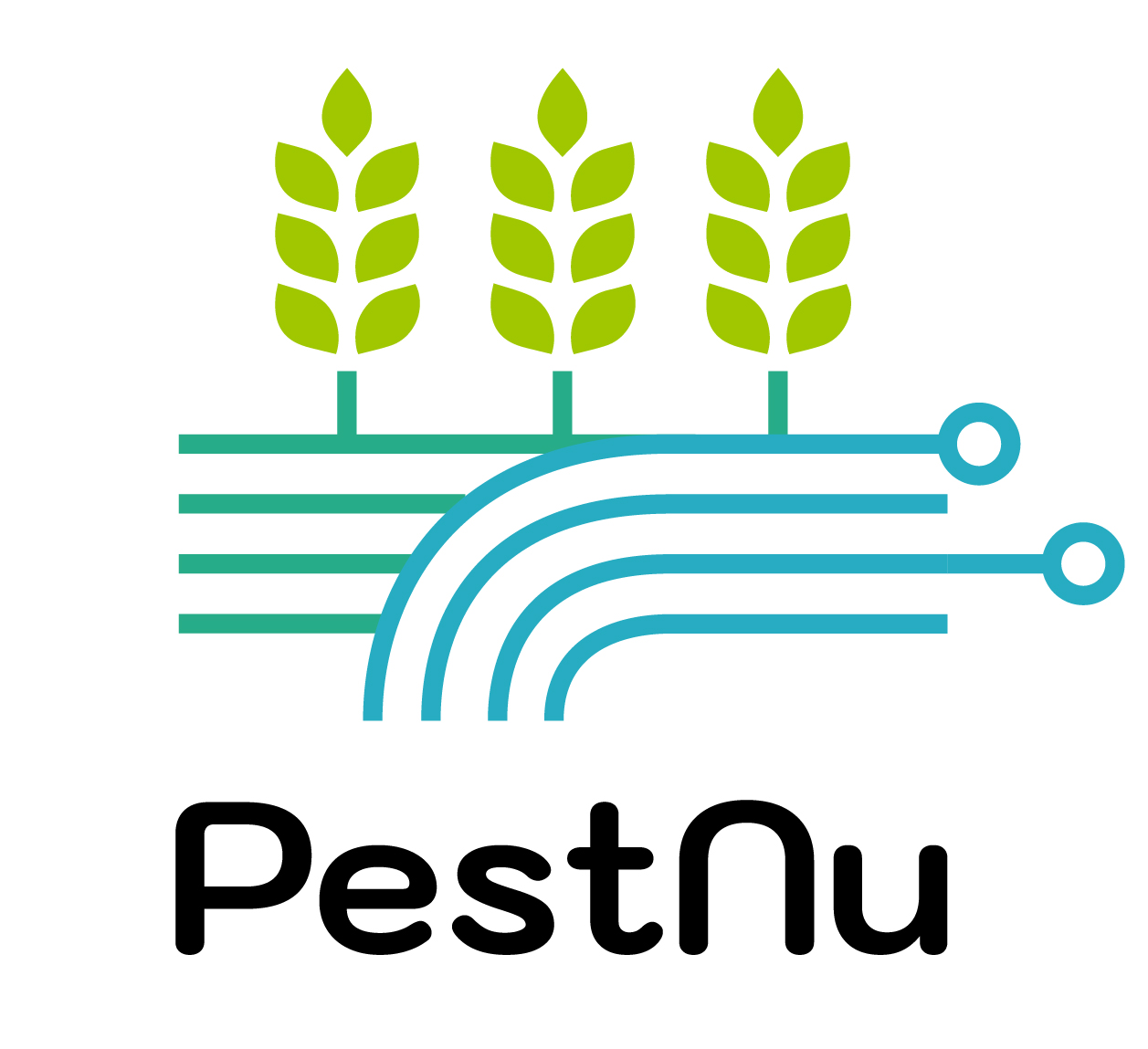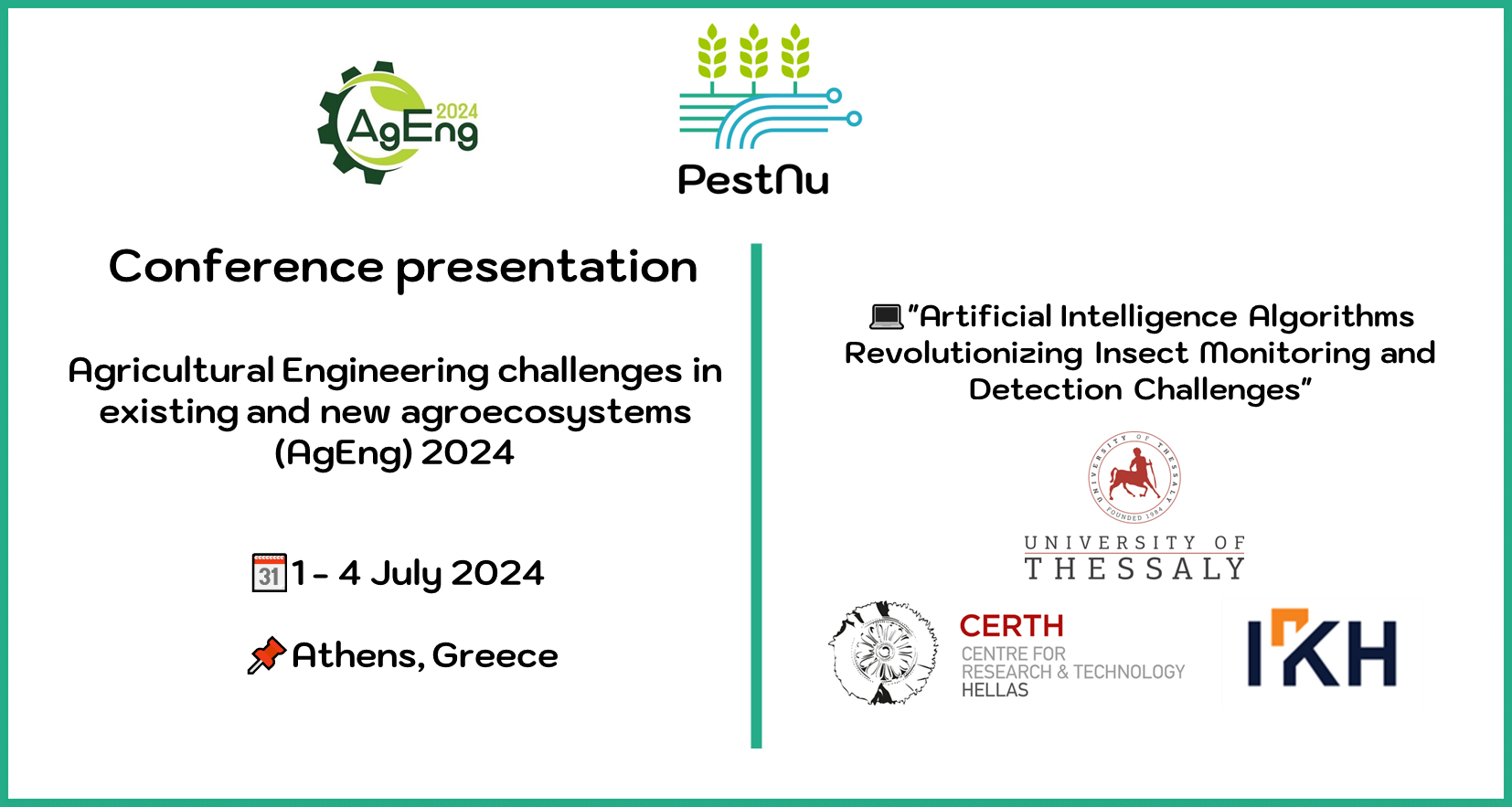PestNu partners, CERTH, University Of Thessaly and iKnowHow have submitted a new abstract at “Agricultural Engineering challenges in existing and new agroecosystems (AgEng) 2024” Conference, which is going to take place on 1-4 July 2024 in Athens, Greece.
The publication, titled “Artificial Intelligence Algorithms Revolutionizing Insect Monitoring and Detection Challenges”, will be presented as a poster during the conference, on July 3rd. More information about this conference can be found on this link: Agricultural Engineering challenges in existing and new agroecosystems (eventsair.com)
The authors of the publication are: P. Christakakis, D. Kapetas, S. Faliagka, N. Katsoulas, D. Tzovaras, E. M. Pechlivani.
The abstract and the keywords are the following:
Insect crop attacks present a significant challenge that Artificial Intelligence (AI) can help address. Early insect detection and insect population growth prediction can bolster yield in both open fields and greenhouse cultivations. Olive trees, vulnerable to the olive fruit fly, Bactrocera oleae (BO), and vegetables like tomatoes and cucumbers, often attacked by pests like Tuta absoluta, aphids, and whiteflies, underscore the significance of AI in agricultural applications. This study, aims to provide Deep Learning (DL) models for crop monitoring and early detection of these insects and their plant symptoms, aligning with the Green Deal 2030 principles of agricultural sustainability and reduced reliance on chemical pesticides. This study utilizes available RGB images from libraries in combination with synthetic datasets and datasets created with insect traps. In particular, four implementations were developed. a) For detecting infestations of Tuta absoluta, DL was combined with ensemble techniques, by merging outputs from multiple models, enhancing detection metrics by 20% and elevating the mAP50 (mean Average Precision) from 0.58 to 0.70. b) To overcome insufficient data of small insects (1 and 4 mm), adhesive traps were employed to capture images of prevalent insects in vegetable crops, including whiteflies and black aphids and the DL models reached 0.75 mAP50 for the detection of these miniscule insects. c) To tackle whiteflies data scarcity, a synthetic dataset was generated, reaching 0.66 mAP50, coupled with a high accuracy of 0.76. d) For the detection of BO, a threat to the olive industry, a DL technique for creating lightweight models was used, reaching 0.81 mAP50, enabling real-time detection in-situ. These high-performing results apply to a range of digital tools (mobile apps, argo-robots, AI-based robotic traps). Real-time monitoring, insect population growth prediction, and integration with Decision Support Systems is achieved, providing essential data for informed decision-making in crop protection while also enabling timely intervention.
Keywords: artificial intelligence, smart agriculture, deep learning, insect detection, smart farming

